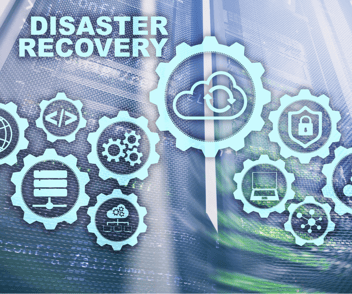Why Your Business Needs a Disaster Recovery Plan & How to Build One
IT disruptions are no longer a matter of if—they're a matter of when. Whether it’s a ransomware attack, hardware failure, or natural disaster, threats can strike without warning and leave your business paralyzed. The financial, operational, and reputational damage can be severe—and for some businesses, even irreversible. A disaster recovery plan should be seen as a business-critical asset—not just an IT checklist.
A well-built disaster recovery plan is your business’s safety net. It ensures you can recover quickly, minimize downtime, and protect your data. At Gant Systems, we help businesses build resilient IT strategies so they can navigate disruptions with confidence.
Common IT Disasters and Their Impact on Businesses
IT disasters come in many forms: cyberattacks like ransomware and phishing, natural events such as floods or storms, hardware failures, and even simple human error. Each of these can lead to serious disruptions—from data loss and downtime to compliance issues and customer dissatisfaction.
For example, a ransomware attack might lock you out of essential data, halting operations until a ransom is paid. A flood could physically damage your servers, wiping out years of information. These events don’t just cause temporary setbacks—they can erode customer trust, reduce productivity, and jeopardize long-term business continuity. Having a formal disaster recovery plan in place is key to minimizing business disruption and ensuring a swift recovery.
Key Components of an Effective Disaster Recovery Plan
A strong disaster recovery plan includes several key components:
-
Risk Assessment: Identify potential threats—both natural and human-made—that could disrupt your business.
-
Business Impact Analysis: Evaluate how each type of threat could affect operations and prioritize your most critical systems and data.
-
Recovery Strategies: Define how you’ll recover lost data and resume operations, including backup methods, failover systems, and alternate work locations.
-
Implementation Plan: Document roles and responsibilities so everyone knows what to do in the event of a disruption.
-
Testing & Maintenance: Regularly test your recovery procedures and update your plan as your business evolves or new risks emerge.
According to the National Institute of Standards and Technology (NIST), disaster recovery plans should be detailed and tested regularly to ensure mission-critical functions can be resumed within set timeframes, often within 12 hours and up to 30 days after an event.
The Role of Managed IT Services in Disaster Recovery
Managed IT services are a key part of effective disaster recovery. By partnering with a provider like Gant Systems, you gain access to advanced tools and expert support that help prevent, detect, and respond to disruptions quickly.
From continuous system monitoring to proactive maintenance and patching, managed services help reduce your exposure to risk. An MSP can also guide the creation and execution of your disaster recovery plan—ensuring it aligns with industry best practices. A complete disaster recovery strategy should integrate incident response plans, business continuity protocols, and IT-specific recovery actions for a unified response.
Leveraging Backup Recovery and Cloud Solutions
Reliable backups and cloud infrastructure are foundational to any disaster recovery plan. Regularly backing up your data ensures you can recover quickly if systems fail. Cloud storage adds flexibility and resilience by giving you access to data from anywhere—even if your physical office is compromised.
According to IBM, modern backup and disaster recovery systems should include both on-premises and cloud-based components, with real-time monitoring and failover capabilities to minimize data loss and operational downtime.
At Gant Systems, we provide tailored backup and cloud solutions designed to safeguard your business-critical information. Our services minimize downtime and data loss, so you can bounce back fast when disruptions occur.
How Gant Systems Can Protect Your Business
At Gant Systems, we understand how disruptive and costly IT disasters can be. That’s why we offer a comprehensive suite of managed IT services, backup recovery, and cloud solutions to help you stay prepared.
Our team works closely with you to develop a disaster recovery plan tailored to your business. We provide the tools, support, and expertise needed to keep your systems secure, current, and recoverable. And because regulations and threats evolve constantly, we also help ensure your plan meets modern standards. Disaster recovery isn't just about having a plan—it's about keeping it current, tested, and scalable as your business grows.
Don’t Wait for a Disaster to Strike
Disaster recovery planning isn’t just good practice—it’s critical for business survival. By identifying risks, implementing the right technologies, and partnering with experts like Gant Systems, you can reduce downtime, protect your data, and maintain customer trust.
Don’t wait until a disaster strikes. Start building your plan today—and ensure your business is ready for whatever comes next.




